In Champagne, there are a multitude of unmissable experiences to do:
Explore the immense champagne cellars
No stay in Champagne would be complete without a visit to the famous Champagne cellars where dozens, if not hundreds of millions of bottles of champagne are carefully stored away from light and heat!
Two cities concentrate the most impressive sites:
- The cellars of Reims , extending over more than 120 kilometers of underground galleries , enjoy a worldwide reputation. Some of the largest champagne houses are located on the slopes of the Saint-Nicaise hill , pierced with galleries called ""crayères"".
Let us cite among others - Maison Ruinart (4 rue des Crayères, Reims) which offers an exceptional visit to its Gallo-Roman chalk quarries accompanied by a tasting of its great wines
- Maison Taittinger (9 pl. St-Nicaise, Reims) where 15 million bottles are stored
- the Maison Vranken-Pommery (5 impasse du Général-Gouraud, Reims) where, beyond the 120 chalk pits connected by 18 kilometers of galleries, it is possible to marvel at a thunderbolt (huge barrel) of 75,000 liters, or 100,000 bottles!
- the GH House. Mumm (34 rue du Champ de Mars, Reims): three visits allow the curious and enlightened amateurs to discover or deepen their knowledge in the art of tasting. At the end of the visit, you can visit a museum on the making of Champagne before tasting one of the House's exceptional vintages.
A little further south, Épernay , considered the "" Capital of Champagne "", has nearly 110 kilometers of underground cellars and 130 kilometers of roads! In total, no less than 200 million bottles are stored in the chalk cellars of Épernay by Moët & Chandon, Mercier or De Castellane .
And if these immense galleries are used today to store precious bottles, it should be noted that they also, because of their solidity, served as shelters during periods of war. There is only one major incident to be deplored: the collapse in 1990 of the cellars of Maison Pol Roger which resulted in the burial of 1.5 million bottles!
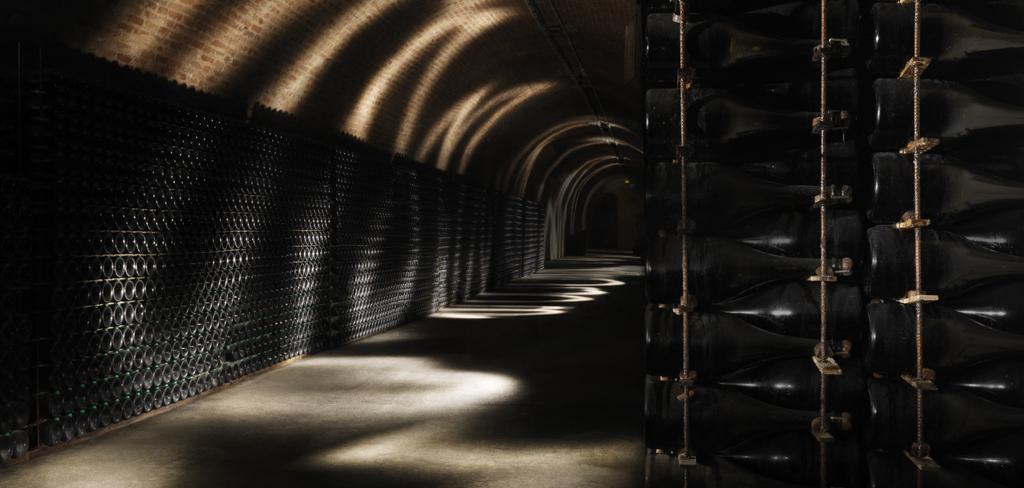
Inside the chalk pits of Maison Ruinart in Reims © Maison Ruinart
Walk in the footsteps of the Kings of France
If you remember your History lessons, you will certainly remember that Reims was the city of the coronation of the Kings of France for almost eight centuries, from 1223 to 1825. Notre-Dame de Reims Cathedral , one of the most large and most beautiful cathedrals in France and the Christian world, symbolizes the fascinating heritage of the city in the history of our country. A flagship of Gothic architecture, listed as a UNESCO World Heritage Site for nearly 25 years, the Cathedral impresses both with its majestic volumes (138 meters long, vault height of 38 meters for towers peaking at 81 meters) and with its elegant lines. We will not fail to admire the Smiling Angel , a famous statue located at the north portal of the west facade.
Adjacent to the Cathedral, the Palais du Tau , also listed as a UNESCO World Heritage Site, is also worth a detour. This 12th century T-shaped palace ( tau in Greek, which gave it this curious name), which was the place of residence of the archbishops of Reims, served as a place of stay for the king and his retinue on the occasion of the coronation . All that remains is to use your imagination to relive the coronations and the great coronation ceremony...
Improvise a picnic in the heart of the vineyards
Before being stored in the famous cellars (see above), Champagne wine owes its origin to some 34,500 hectares of vineyards in the region . In this environment, partially classified as a UNESCO World Heritage Site since July 2015, splendid vineyard landscapes are available to travelers.
What could be more normal than taking advantage of a unique setting to improvise a picnic and uncork a good bottle of champagne, in the middle of the vineyards? The Made in Champagne blog thus offers five places "" which are stunning "" for picnicking in style , from the heights of Hautvillers ("" the most romantic"" ) to the village of Grauves near Épernay ("" exceptional panorama) in passing through the inevitable Parc de Champagne in Reims (but without the vineyards…).
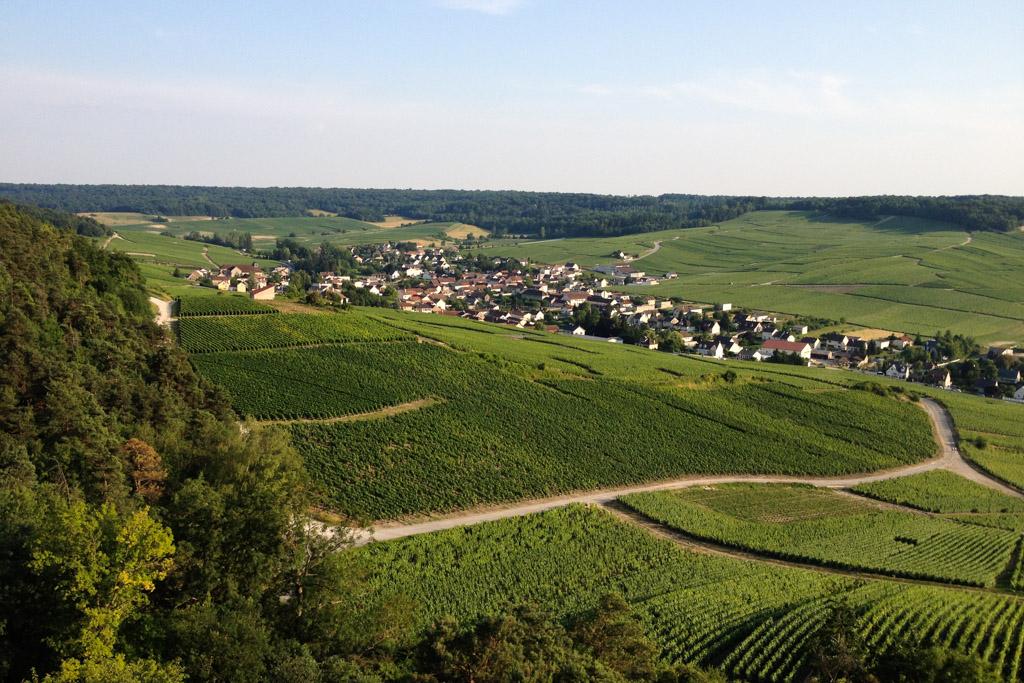
View of the vineyards in Grauves, south of Épernay:an ideal spot for a picnic © Made in Champagne
Visit the village of Dom Pérignon
Whoever has never dreamed of treating themselves to a bottle of Dom Pérignon, especially during the end-of-year holidays, raise your hand. For any champagne lover, the name Dom Pérignon is synonymous with prestige and excellence . The reason ? Dom Pérignon is a vintage cuvée produced, during exceptional years, by the house of Moët & Chandon and considered one of the best champagnes in the world.
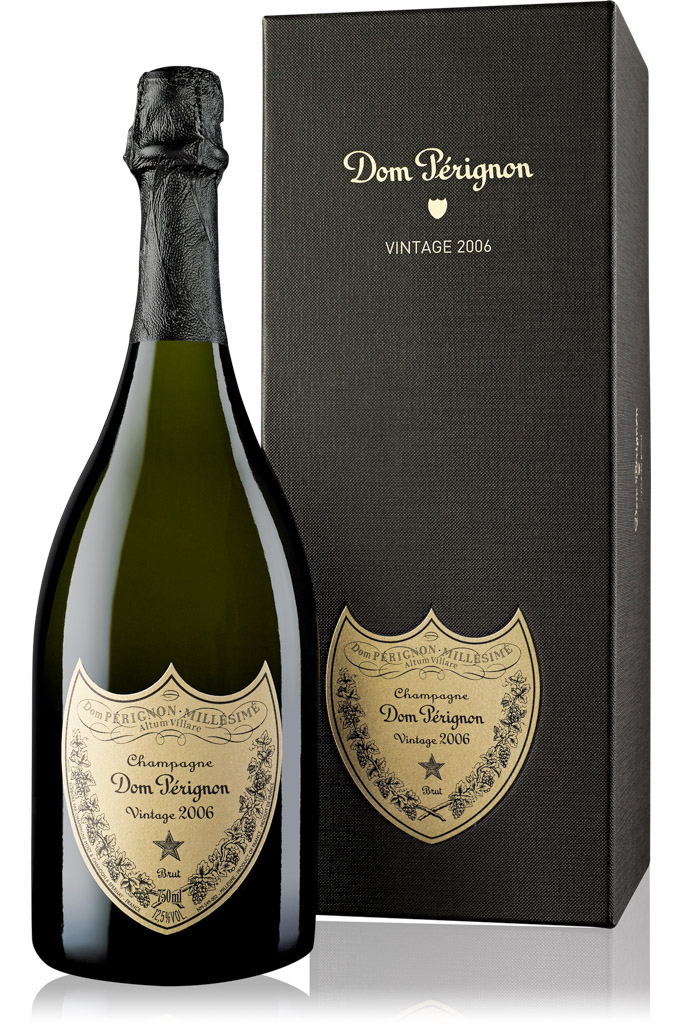
At the origin of this legendary name, a man who forever marked the history of the most famous sparkling wine. It is in fact a certain Dom Pérignon , monk of the Benedictine abbey of Hautvillers, who was the first in 1670 to introduce a grape blending technique to improve the quality of wine. According to legend, he also, for the first time, had the bottles reinforced to prevent the glass from exploding under the pressure of the bubbles or used a cork held to the bottle by a hemp string impregnated with oil ( !) to preserve the freshness and foam of the wine.
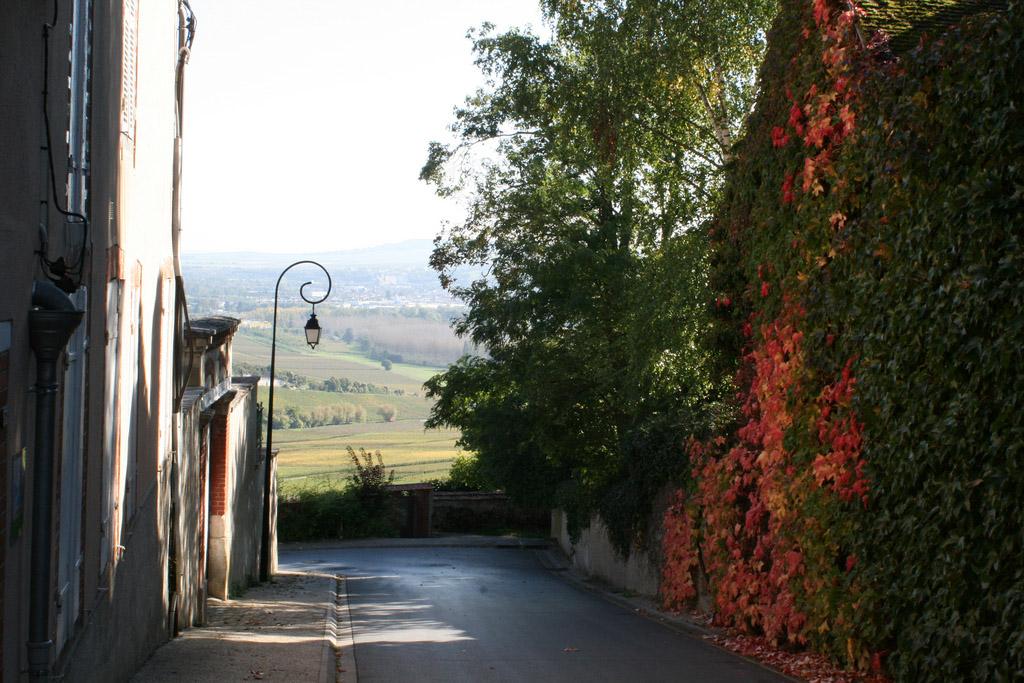
In the streets of Hautvillers © CC Jim Woulfe
Visiting Hautvillers , a charming village perched at an altitude of more than 200 meters on the southern slope of the Montagne de Reims, is the opportunity to follow in the footsteps of this legendary name of champagne by visiting the abbey church. Saintt-Sindulphe where he has rested since 1715. Or more joyfully, by participating in the exceptional Dom Pérignon Workshops , sessions reserved for a few happy few who, for the tidy sum of €600;will be able to taste some of the best vintages of the house!
More modestly, the very recommendable bar-bistro Au 36 allows you to taste excellent single-varietal champagnes at much more affordable prices.
Go to the beach… to Lac du Der!
48 km2 is the surface area of Lac du Der on the border of Marne (51) and Haute-Marne. A little-known lake whose surface area is 50% greater than that of Lake Annecy! This lake, which turns out to be the largest artificial lake in Europe, is particularly popular with the locals who love its beach on sunny days.
The rest of the year it is the hiking trails in the adjacent forest that make the lake famous in Eastern France. It must be said that the place is renowned for its flora and fauna. Nearly 300 species of birds(greylag geese, white-tailed eagles, herons, Bewicl swans, whistling ducks, ospreys, terns, etc.) have been observed in this ecosystem born by the hand of man. In the fall (usually during November), the spectacular migration of common cranes from Scandinavia to more clement regions in southern Spain or northern Africa delights ornithology enthusiasts . In fact, no less than 200,000 birds of the species stop at the lake every year!
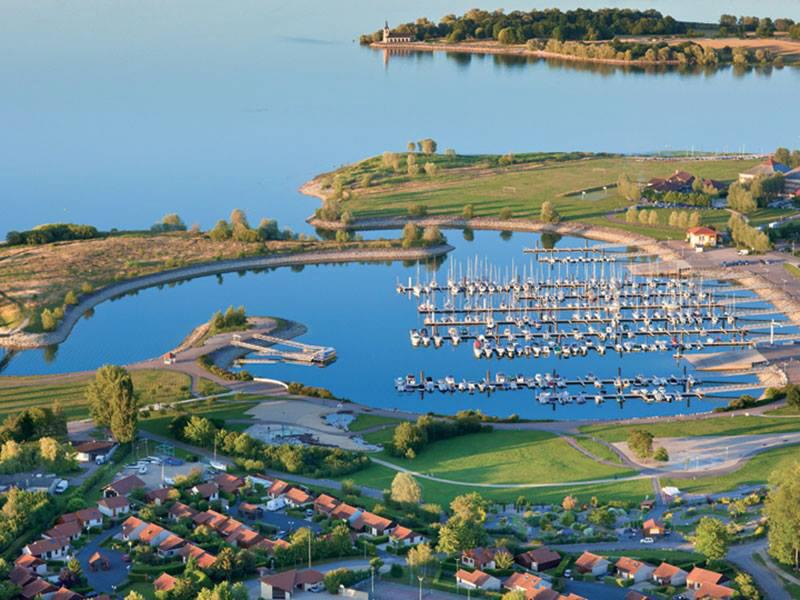
Aerial view of Lac du Der © P. BOurguignon / Tourisme en Champagne
Stock up on champagne!
Winegrowers' champagnes
Louis Roederer, Ruinart, Veuve Cliquot… these champagne houses are famous in France and all over the world.However, Champagne is not just about big brands with perfectly controlled marketing. "" At the same price, some offer products that are more sophisticated than the brands ,"" assures Benjamin Cherrière, a specialist in these champagnes that are not found in supermarkets. Among these winegrowers' champagnes (more than 4,000 in total) at less than €30, a panel of great French sommeliers brought together by Capital magazine recommends in particular the Diebolt-Vallois (Prestige vintage, blanc de vins), the Egly-Ouriet (vintage Brut Tradition grand cru), De Sousa (Cuvée Réserve, blanc de vins). Or the Emmanuel Brochet (Le Mont Benoît vintage, premier cru), a champagne described as "" tense, chiseled, and carried by a powerful bubble "" by Antoine Pétrus, Meilleur Ouvrier de France in Sommellerie (2011) and Director of the Restaurant Le Clarence .
Young Talents from Champagne
As for the Young Talents of Champagne operation (organized since 2012 in the form of a competition structured around four categories: Chardonnay, Pinot, Rosé and Assemblage), its objective is to promote young winegrowers who vinify, produce bottle and market their own champagne, thus rewarding their know-how and their products. Find here all the winners of the 2016 edition to discover the list of the great champagnes of tomorrow and get off the beaten track!
The ""Vineyards and Discoveries"" label
No less than eight territories are labeled Vignobles & Découvertes in the Champagne appellation zone. These different territories allow you to discover so many facets of champagne thanks to the diversity of soils, the variety of climates and wine-growing practices.In total, there are nearly 500 Champagne service providers in these areas who are committed to respecting demanding specifications to guarantee the quality of visitor reception. Particular sensitivity to the world of wine, ability to welcome in a foreign language, taste for transmission, authenticity, openness to heritage, whether natural, cultural or human, are among the criteria taken into account for the award of the label .
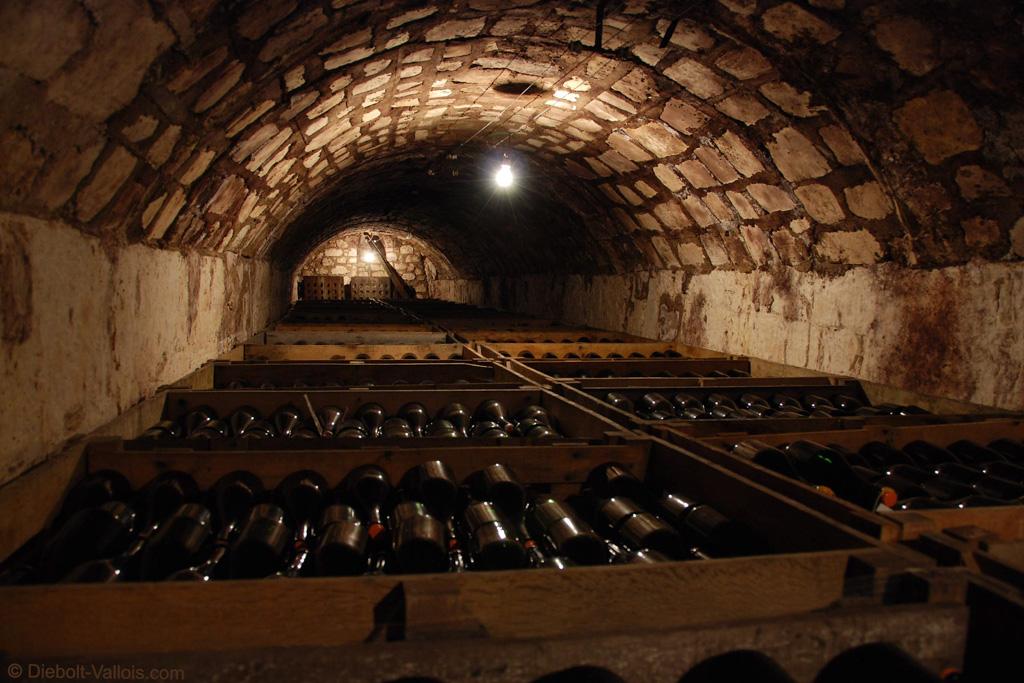
The cellars of producer Diebolt Vallois © Remi Loisel - Studio Amarante for Diebolt Vallois
Travel the roads of the Montagne de Reims
A vast plateau of 50,000 hectares culminating at almost 300 meters above sea level, the Montagne de Reims Regional Natural Park , wedged between Reims to the north and Épernay to the south, is worth a road trip . Between forests and vineyards, idyllic villages and preserved wildlife, the ""Mountain» as it is nicknamed offers some of the most beautiful landscapes in the region .
To discover it, there's nothing like taking the D26 which follows the north coast, winding among the vineyards and beautiful villages of Champagne (you won't miss the windmill and especially the Verzenay lighthouse, from the top of which a spectacular panorama 360° view available to visitors).
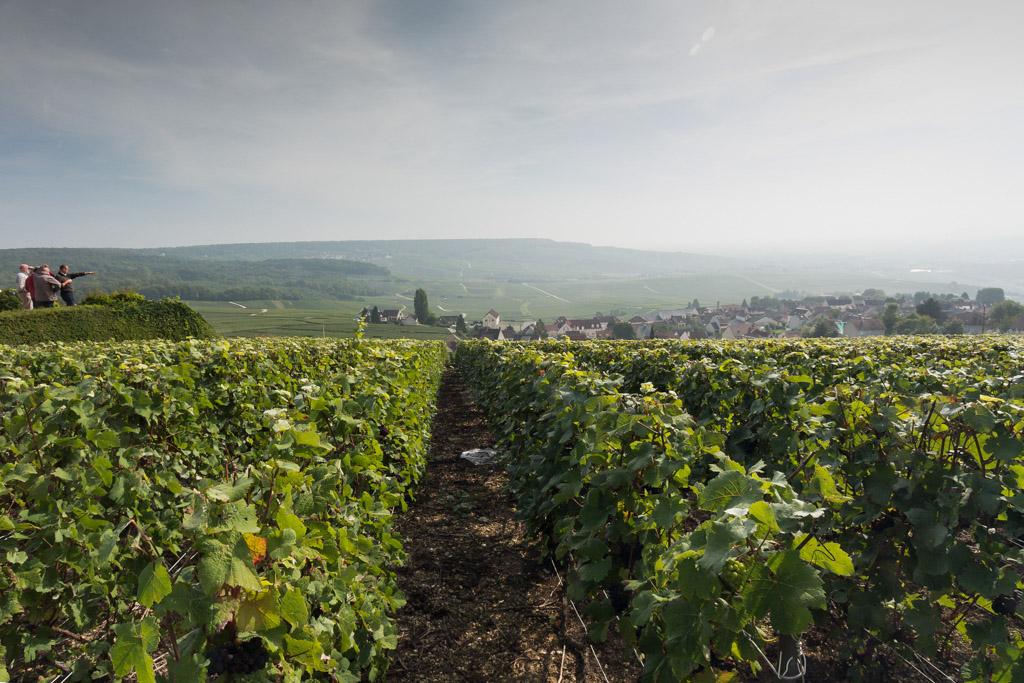
Typical decor of the Montagne de Reims, here in the Hautvillers area © CC G.Bailyss
The D9 allows you to continue south towards Aÿ , in the heart of a thousand-year-old vineyard. It is also here that Maison Gosset , the oldest in Champagne, is established. We can complete the tour in the direction of Nanteuil-la-Forêt (pretty botanical garden) and Coulommes-la-Montagne (beautiful Romanesque church) by taking the D286, obviously not forgetting to make a stop at Hautvillers, the village of Dom Pérignon (read above on this subject).
Set out to conquer the historic Marne
A little further east of the Reims - Epernay wine axis, La Champagne reveals some remarkable historical sites . From Châlons-en-Champagne , prefecture of Marne, renowned for its churches (St-Étienne Cathedral, Notre-Dame-en-Vaux collegiate church, a 12th century Gothic church listed as a UNESCO World Heritage Site churches of the paths of St-Jacques-de-Compostelle or even St-Alpin…) as well as for its places of memory (former headquarters of the Gestapo, now transformed into a museum).
Even further east, on the borders of the Champagne plains, the Pays d'Argonne was the center of all attention during the Great War. The Butte de Vauquois was, for example , the scene of fierce battles between the French and Germans , who never managed to win.What followed was a mine war, the scars of which the earth still bears today (craters 30 meters deep!).
Between Châlons and the Pays d'Argonne, the Marne 14-18 Interpretation Center in Suippes invites history lovers to immerse themselves in the daily life of soldiers and civilians who experienced the First World War. A fascinating experience , just like that offered by the Valmy 1792 Historical Center (Valmy, a quarter of an hour from Suippes) which uses new technologies to bring to life the different stages of the legendary Battle of Valmy of September 20, 1792 , first decisive victory of the French army after the Revolution.



